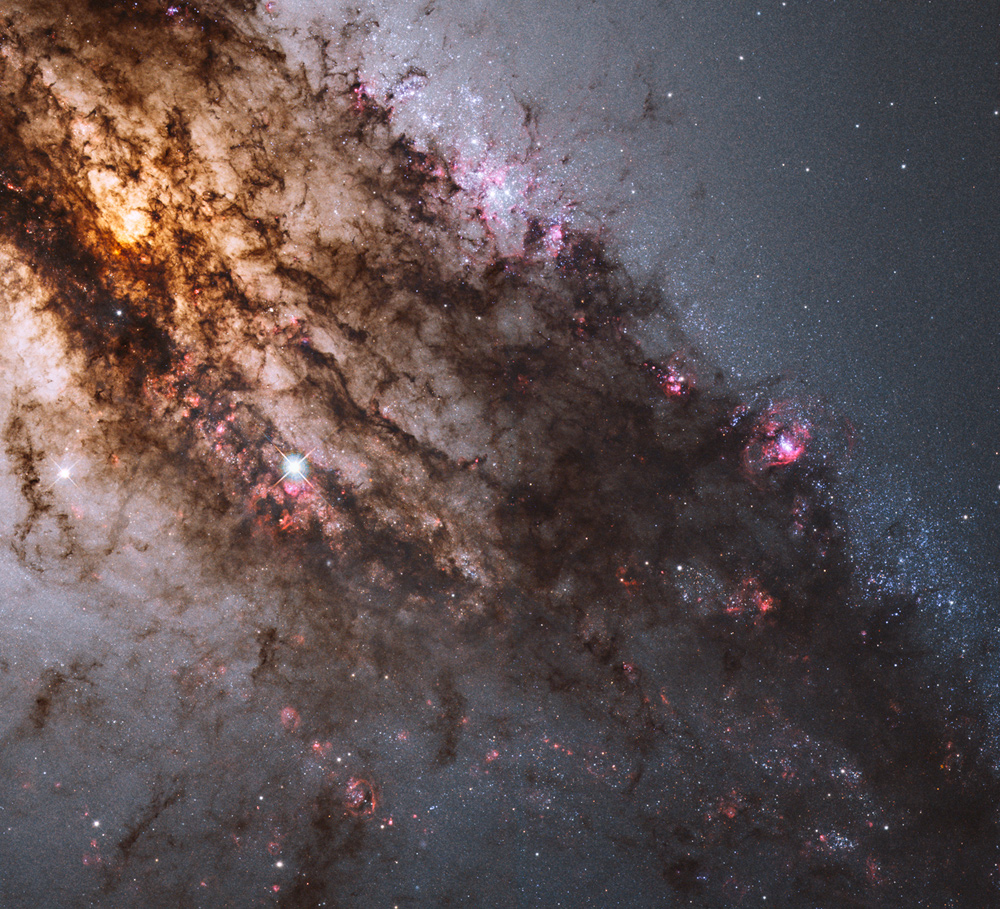2020 February 22
Central Centaurus A
Image Credit: NASA, ESA, Hubble Heritage (STScI/ AURA)-ESA/Hubble Collaboration
Explanation: A mere 11 million light-years away, Centaurus A is the closest active galaxy to planet Earth. Also known as NGC 5128, the peculiar elliptical galaxy is over 60,000 light-years across. A region spanning about 8,500 light-years, including the galaxy’s center (upper left), is framed in this sharp Hubble Space telescope close-up. Centaurus A is apparently the result of a collision of two otherwise normal galaxies resulting in a violent jumble of star forming regions, massive star clusters, and imposing dark dust lanes. Near the galaxy’s center, left over cosmic debris is steadily being consumed by a central black hole with a billion times the mass of the Sun. As in other active galaxies, that process likely generates the radio, X-ray, and gamma-ray energy radiated by Centaurus A.
Tomorrow’s picture: simulated Universe
半人马座A的核心区
影像提供:NASA , ESA , Hubble Heritage ( STScI / AURA )-ESA/Hubble Collaboration
说明:近在1千1百万光年之外的半人马座 A,是离地球最近的活跃星系。这个亦名为NGC 5128的奇特椭圆星系,宽度超过60,000光年。这张清晰的哈伯太空望远镜特写影像,呈现了包括星系中心在内、跨幅约8,500光年的区域。半人马座A很显然是二个原来正常的星系碰撞之产物,而此次互撞,也产生了混乱堆积的大质量星团和广袤的黝黑尘埃带。在星系的核心附近,碰撞后孑遗下来的碎片,持续的被质量高达太阳10亿倍的黑洞所吞噬。就如同其他的活跃星系一样,这类的过程,可能驱动了半人马座A发出电波、X-射线与伽玛射线波段的辐射。
明日图片:simulated Universe








One Comment